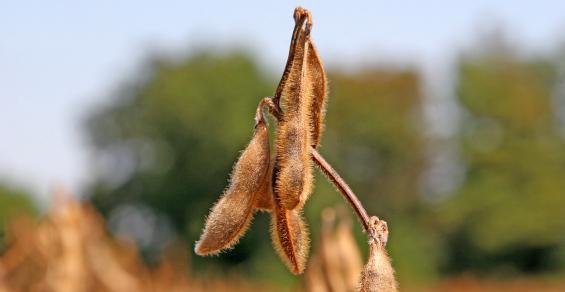Soybean Export Council hosts international webinar featuring growers from U.S. farming regions.
With all the uncertainty in the world the U.S. Soybean Export Council’s March Planting Intentions and Quarterly Stocks Report Webinar attracted a widespread audience of the world’s soybean users.
Some of those audience members may have been surprised – and encouraged – when a participant on the webinar’s farmer panel told them he had already planted a few acres of soybeans prior to the report’s release on March 31.
“Being further south our weather is a little warmer, and we actually have a few soybeans planted,” said David Nichols, a corn, soybean and soft red winter wheat producer from Ridgely, Tenn. “We got the planter out of the shed to make sure everything’s working so we have seeded just a few acres.
“This is early for us, but our research has found that we can bump yields a little bit with those early plantings. We’re trying to experiment and learn as we go. I always tell my sons if we don’t do something different we don’t learn. So we’re always trying new practices to push our yields higher, as well.”
Nichols farms with his sons, Tyler and Tanner, and his wife, Ginger. Tyler and Tanner are the fifth generation of Nichols family members on the farm, which is located in Dyer County, Tenn., not far from the Mississippi River.
“Each day you can find one of these family members in the field or in the office – it’s truly a family operation,” said Nichols, who also operates a seed dealership that services farmers in the surrounding area.
Nichols was joined by Tim Bardole, a corn, soybean and hog farmer from Rippey in central Iowa, and Jim Douglas, a corn, soybean and hog producer from Flat Rock in south central, Indiana.
The three farmers showed how just different their regions are when it comes to preparing for the 2022 planting season.
Bardole applied most of the nitrogen for his corn and other nutrients for corn and soybeans last fall because much of the farmland in Iowa is covered with snow or frozen through most of the winter. The practice allowed him and other Iowa farmers to purchase and apply fertilizer before prices began to climb during the winter and to stick with their normal crop rotation.
Farmers in Douglas’ area don’t apply much fertilizer in the fall, but he began purchasing nutrients last fall in anticipation of prices rising. He also fertilizes many of his acres with manure from his wean-to-finish hog operation.
“We would like to grow 60% corn and 40% beans, but if the planting season doesn’t work out we have enough soybean seed on hand that we can go to a 50-50 rotation,” he said.
Douglas had a message for soybean buyers watching the webinar on the night of March 31. “Farmers in the U.S. are geared up to plant this crop,” he noted. “It should be a successful season so we should have an ample supply to provide to everybody.”
To view the webinar, visit https://www.youtube.com/watch?v=pgBQny6Nxr4.
It’s not often a Mid-South farmer gets to explain his farming operation for customers around the world. But that was the case for David Nichols and two Midwest farmers. They were speakers on a producer panel for a webinar held by the U.S. Soybean Export Council following the release of the USDA’s March 31 Planting Intentions Report.





